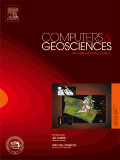
COMPUTERS & GEOSCIENCES
Scope & Guideline
Bridging Earth Science and Technology for a Sustainable Future
Introduction
Aims and Scopes
- Computational Modeling and Simulation:
The journal publishes research on computational methods and models that simulate geological and geophysical processes, including fluid dynamics, heat transfer, and material behavior in the earth's crust. - Machine Learning and Data Science Applications:
There is a strong emphasis on the application of machine learning and artificial intelligence techniques to analyze geological data, improve predictive models, and automate processes such as image classification and anomaly detection. - Remote Sensing and Geospatial Analysis:
Research focusing on remote sensing technologies and geospatial data processing is prevalent, covering topics such as image segmentation, change detection, and 3D modeling of geological features. - Geophysical Inversion and Analysis:
The journal includes studies on inversion techniques for geophysical data, such as seismic and electromagnetic methods, aimed at characterizing subsurface structures and properties. - Interdisciplinary Approaches in Geosciences:
Emphasizing collaboration across disciplines, the journal encourages research that integrates geosciences with computer science, physics, and engineering to address complex environmental and geological issues.
Trending and Emerging
- Deep Learning and AI in Geosciences:
There is a notable increase in the application of deep learning and artificial intelligence techniques to various geoscience problems, such as image classification, anomaly detection, and predictive modeling, showcasing the transformative impact of these technologies. - 3D Geospatial Modeling and Analysis:
Research focusing on three-dimensional modeling of geological structures and processes is gaining traction, with advancements in computational methods allowing for more accurate and detailed representations of subsurface geology. - Integration of Big Data Analytics:
The incorporation of big data analytics in geosciences is emerging as a critical theme, with studies exploring how large datasets can be leveraged to improve modeling, forecasting, and understanding of geological systems. - Geophysical Data Inversion Techniques:
There is growing interest in advanced inversion techniques for geophysical data that enhance the accuracy of subsurface characterization, reflecting a trend towards more sophisticated modeling approaches. - Sustainable and Environmental Applications:
Research addressing sustainability and environmental challenges, such as climate change impacts and resource management through computational approaches, is becoming increasingly prominent, indicating a shift towards applied geoscience with societal relevance.
Declining or Waning
- Traditional Statistical Methods:
There seems to be a waning focus on conventional statistical methods for data analysis, as researchers increasingly prefer machine learning and data-driven approaches that offer greater flexibility and predictive power. - Basic Geostatistics:
The use of basic geostatistical techniques appears to be declining, possibly due to the rise of more sophisticated modeling techniques and machine learning algorithms that can handle complex datasets more effectively. - Fundamental Theoretical Studies:
There is less emphasis on purely theoretical studies in geosciences, as the journal leans towards applied research that demonstrates practical applications of computational techniques in real-world scenarios. - Generalized Geophysical Surveys:
Research focusing on generalized geophysical surveys without a specific application context is becoming less common, with a shift towards targeted studies that address specific geological challenges or phenomena. - Low-Resolution Remote Sensing Techniques:
The journal is moving away from low-resolution remote sensing techniques as advancements in high-resolution imaging and analysis methods become the preferred choice for geoscientific investigations.
Similar Journals

Physical Oceanography
Connecting Science and the SeaPhysical Oceanography is an esteemed open-access journal dedicated to the exploration and dissemination of research on the dynamic processes that govern the physical aspects of oceans. Published by the Federal State Budget Scientific Institute, Marine Hydrophysical Institute, this journal provides a forum for innovative studies and significant findings in the fields of fluid flow, geophysics, ocean engineering, and water science. With an ISSN of 0928-5105 and an E-ISSN of 1573-160X, Physical Oceanography has been granting open access to its valuable content since 2015, ensuring widespread accessibility and impact in the scientific community. Its rigorous peer-reviewed articles are crucial for researchers, professionals, and students who aim to advance their knowledge and understanding of the intricacies that govern our oceans. With a current impact factor reflecting its solid standing in the Q3 category across multiple disciplines, including oceanography and geophysics, this journal remains a vital resource for advancing oceanographic research and innovation.
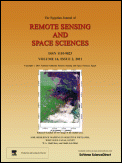
Egyptian Journal of Remote Sensing and Space Sciences
Empowering Researchers with Open Access to Groundbreaking DiscoveriesThe Egyptian Journal of Remote Sensing and Space Sciences, published by Elsevier, is a premier open-access journal dedicated to advancing the fields of Remote Sensing and Space Sciences. Since its inception, the journal has gained a prominent reputation, currently holding a prestigious Q1 ranking in Earth and Planetary Sciences and placing within the top 10% of its field according to Scopus metrics. With an ISSN of 1110-9823 and an E-ISSN of 2090-2476, the journal features a diverse range of scholarly articles that explore both theoretical and practical aspects of remote sensing technologies and space science innovations, thus appealing to researchers, professionals, and students alike. Established in 2003 and fully transitioning to an open-access model in 2010, the journal aims to disseminate knowledge and foster collaboration across the globe by providing wider accessibility to groundbreaking research findings. Its commitment to quality and innovation is a catalyst for intellectual development in these dynamic and evolving disciplines.
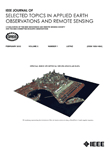
IEEE Journal of Selected Topics in Applied Earth Observations and Remote Sensing
Advancing Earth Sciences through Innovative Remote Sensing.IEEE Journal of Selected Topics in Applied Earth Observations and Remote Sensing is a premier peer-reviewed journal published by the IEEE-INST ELECTRICAL ELECTRONICS ENGINEERS INC, focused on advancing the field of Earth observation and remote sensing technologies. With an impressive impact factor, this journal ranks in the top quartile (Q1) for both Atmospheric Science and Computers in Earth Sciences, underscoring its significance and influence in the academic community. Open access since 2020, it facilitates broader dissemination of research findings to enhance global visibility and accessibility for researchers, professionals, and students alike. Spanning the years from 2008 to 2024, the journal covers a myriad of topics that highlight innovative applications of remote sensing data and technologies in addressing environmental challenges. With a Scopus ranking placing it in the 91st and 89th percentiles, respectively, in its categories, the journal serves as a vital resource for advancing scholarly discourse and collaboration in Earth sciences.

COMPUTATIONAL GEOSCIENCES
Advancing Earth Science through Computational InnovationCOMPUTATIONAL GEOSCIENCES, published by SPRINGER, is a distinguished journal in the fields of Computational Mathematics, Computational Theory and Mathematics, and Computer Science Applications. With a focus on the intersection of computational methodologies and geosciences, this journal serves as a vital platform for researchers, professionals, and students seeking to advance the understanding and application of computational techniques in earth sciences. The journal has consistently maintained a strong standing, evident from its impressive Q2 quartile ranking in 2023 across various categories, and significant Scopus rankings in Computational Mathematics and Earth and Planetary Sciences. The global impact of this journal is underscored not only by its rigorous peer-review process but also by its commitment to disseminating high-quality research that bridges theoretical advances and practical applications within the earth sciences domain. Scientifically rich and culturally diverse, COMPUTATIONAL GEOSCIENCES aims to foster collaboration and innovation while addressing pressing challenges posed by our changing planet, making it an essential resource for the academic community.
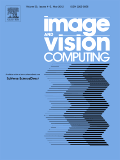
IMAGE AND VISION COMPUTING
Advancing visual technology through innovative research.Image and Vision Computing, published by Elsevier, serves as a leading international journal focused on the dynamic fields of computer vision, pattern recognition, and signal processing. With its esteemed Q1 category rankings in these areas and an impressive standing in Scopus metrics, where it ranks 19th in Computer Vision and 23rd in Signal Processing, this journal has firmly positioned itself at the forefront of academic research and innovation. Established in 1983, it continues to publish cutting-edge research that drives advancements in technology and applications across various domains. The journal is committed to disseminating high-quality, peer-reviewed articles that address significant challenges and propose novel solutions, making it an essential resource for researchers, practitioners, and students alike. While not an open access journal, Image and Vision Computing offers a wealth of valuable insights into the ever-evolving landscape of visual computing technologies.
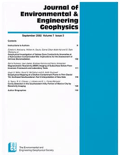
JOURNAL OF ENVIRONMENTAL AND ENGINEERING GEOPHYSICS
Innovating Solutions at the Intersection of Earth and EngineeringJOURNAL OF ENVIRONMENTAL AND ENGINEERING GEOPHYSICS, published by the ENVIRONMENTAL ENGINEERING GEOPHYSICAL SOC, serves as an essential platform for the dissemination of cutting-edge research in the interconnected fields of environmental engineering, geophysics, and geotechnical engineering. This journal, with the ISSN 1083-1363 and E-ISSN 1943-2658, boasts a solid reputation, reflected in its Q3 rankings in several categories as of 2023. As it converged from 2001 to 2024, the journal has evolved to meet the increasing demand for innovative solutions to contemporary environmental challenges. Researchers are encouraged to submit original articles that contribute meaningfully to our understanding of the subsurface environment and its engineering implications. The journal is indexed in Scopus, with commendable rankings including 72nd out of 165 in Geophysics, highlighting its role in advancing knowledge and application in Earth and Planetary Sciences. Although not an open access journal, subscribers and institutions alike recognize the value of its rigorous peer-reviewed content, ensuring that professionals and scholars are equipped with the latest findings and methodologies in this dynamic field.

NEW GENERATION COMPUTING
Pioneering Research in Hardware and Software EngineeringNEW GENERATION COMPUTING is a prominent academic journal published by SPRINGER, specializing in the dynamic fields of Computer Networks, Hardware and Architecture, Software Engineering, and Theoretical Computer Science. With a commitment to disseminating high-quality research since its inception in 1983 and extending its coverage to 2024, this journal occupies a vital role in advancing knowledge and innovation within these critical domains. Holding prestigious Q2 rankings in Computer Networks and Communications, Hardware and Architecture, and Software, as well as a Q3 ranking in Theoretical Computer Science for 2023, NEW GENERATION COMPUTING attracts significant contributions from scholars and professionals around the globe. Researchers will find its rigorous peer-review process ensures the publication of impactful studies, while students gain access to cutting-edge research that shapes contemporary computing practices. Though it does not offer open access, the journal remains an invaluable resource in the academic community, fostering collaboration and dialogue among experts aiming to push the boundaries of technology.
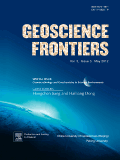
Geoscience Frontiers
Connecting Scholars to Shape the Future of GeoscienceGeoscience Frontiers is a premier open-access journal that has been at the forefront of disseminating impactful research in the field of Earth and Planetary Sciences since its inception in 2010. Published by China University of Geosciences, Beijing, this journal operates from the Netherlands and has gained recognition for its rigorous peer-review process and high standards of scholarship, earning a distinguished position as Q1 in the Earth and Planetary Sciences category. With a Scopus ranking of 5 out of 195, placing it in the 97th percentile, it reflects the journal's commitment to addressing global geological challenges and advancing our understanding of the Earth’s dynamic systems. As an open-access platform, Geoscience Frontiers ensures that vital research is widely accessible, fostering collaboration and innovation among researchers, professionals, and students alike. By providing a forum for cutting-edge discoveries and theories, the journal plays a critical role in shaping the future of geoscientific research and education.

AIMS Geosciences
Exploring the Depths of Geoscientific InquiryAIMS Geosciences, published by the American Institute of Mathematical Sciences (AIMS), is an esteemed open-access journal that has been serving the geosciences community since its inception in 2015. With an ISSN of 2471-2132, the journal disseminates high-quality research pertaining to various disciplines within geosciences, including geology, meteorology, oceanography, and environmental science. By promoting freely accessible research findings, AIMS Geosciences aims to foster collaboration and innovation among researchers, professionals, and students alike. The journal upholds rigorous peer-review standards, ensuring that only the most impactful research is shared with the global academic community. Situated at the forefront of geoscientific inquiry, this journal not only enhances the visibility of cutting-edge research but also contributes significantly to the understanding of Earth's processes, making it an essential resource for anyone engaged in this vital field.

JOURNAL OF SEISMIC EXPLORATION
Elevating Geophysical Research to New HeightsJOURNAL OF SEISMIC EXPLORATION, published by GEOPHYSICAL PRESS, is an esteemed academic journal specializing in the intricate fields of geochemistry and geophysics, focusing on the seismic methods of subsurface exploration. Established in 1992 and operational through 2023, this journal provides a critical platform for researchers, professionals, and students to disseminate high-quality findings related to seismic technologies, exploration techniques, and the interpretation of geophysical data. Although it currently holds a Q4 quartile ranking in both geochemistry and geophysics, the journal remains committed to fostering innovative research that advances the understanding of Earth processes. While not available in an open-access format, the journal offers professional insights and calculates its impact through its dedicated readership and contributions, thereby enhancing the ongoing dialogue in the Earth sciences community. Located in Castelnau-le-Lez, France, this journal is an essential resource for those seeking to deepen their expertise in seismic exploration and its applications.